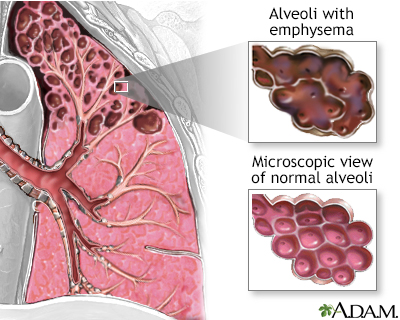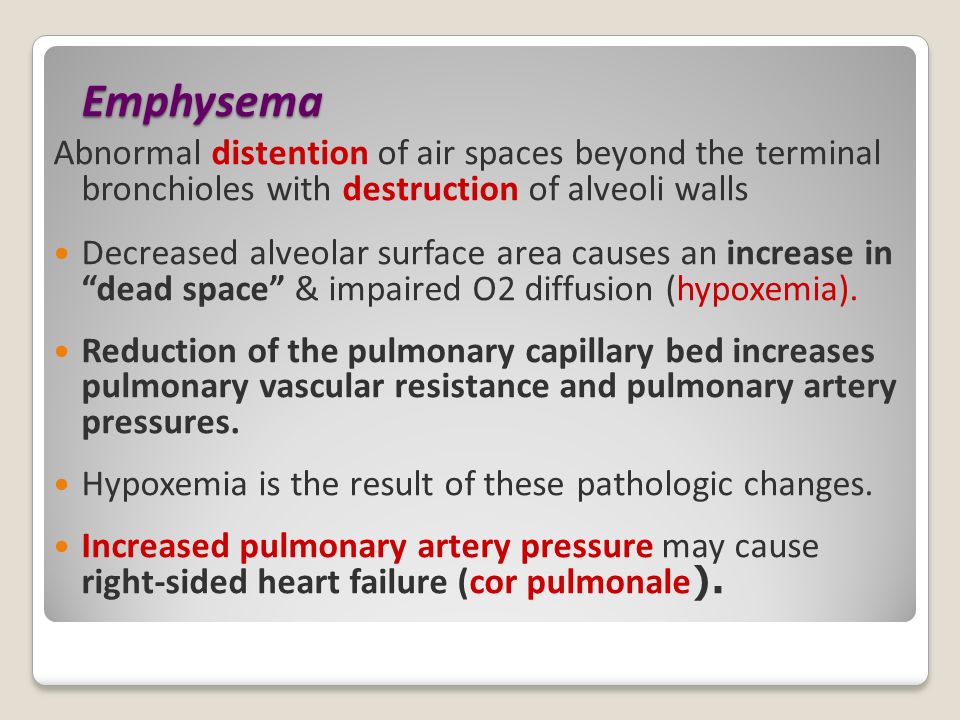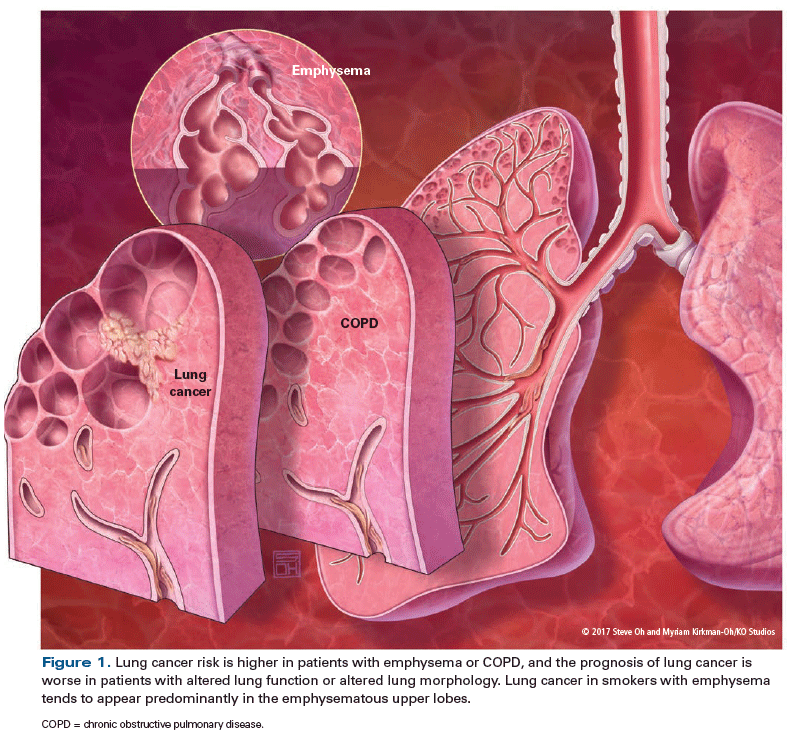Hanging Ends Of Alveolar Walls Emphysema

Emphysema can be defined as having a loss of lung elasticity permanent enlargement of the air spaces distal to the terminal bronchioles and destruction of the alveolar walls.
Hanging ends of alveolar walls emphysema. Loss of surface area for gas exchange. Later stages of emphysema adjacent damaged alveoli forming even larger air spaces. It typically affects the upper lobes first and most profoundly. 12 distal airspace enlargement with alveolar destruction reduces maximal expiratory airflow by decreasing the lung elastic recoil.
The alveoli permanently enlarge and lose elasticity and as a result individuals with emphysema typically have difficulty with. It can be classified under the umbrella term chronic obstructive pulmonary disorder copd 1. Type 1 squamous alveolar epithelial cells. Pulmonary emphysema defines permanent dilatation of airspaces due to destruction of alveolar walls.
Emphysema is defined as enlargement of the airspaces distal to the terminal bronchioles due to destruction of the alveolar walls fig. Emphysema means inflate or swell which makes sense because in the lungs of people with emphysema the alveolar air sacs which are the thin walled air spaces at the ends of the airways where oxygen and carbon dioxide are exchanged become damaged or destroyed. Emphysema also called pulmonary emphysema condition characterized by widespread destruction of the gas exchanging tissues of the lungs resulting in abnormally large air spaces lungs affected by emphysema show loss of alveolar walls and destruction of alveolar capillaries as a result the surface available for the exchange of oxygen and carbon dioxide between inhaled air and blood traversing. There are three types of emphysema.
Emphysema and chronic bronchitis are the two most common forms of chronic obstructive pulmonary disease copd. Constituting 95 of the alveolar surface area 8 the type 1 cells are extremely thin and flexible to help in the process of gas diffusion so the oxygen carbon dioxide exchange can occur between the alveoli and the. A person with chronic bronchitis typically has a daily cough with phlegm that lasts for months at a time over several years. Results from pathological destruction of the alveolar walls and septae from long term exposure to irritants.
Bronchitis is an inflammation and swelling of the bronchial walls. Alveoli are small thin walled very fragile air sacs located in clusters at the end of the bronchial tubes deep inside the lungs. Pneumothorax occurs when pleural membrane surrounding large. The one cell thick walls of the alveoli are composed of two distal airway epithelium cell types pneumocytes 7.
It is one end of the spectrum of copd resulting from the smoking of tobacco. Emphysema is a condition that involves damage to the walls of the air sacs alveoli of the lung.














































